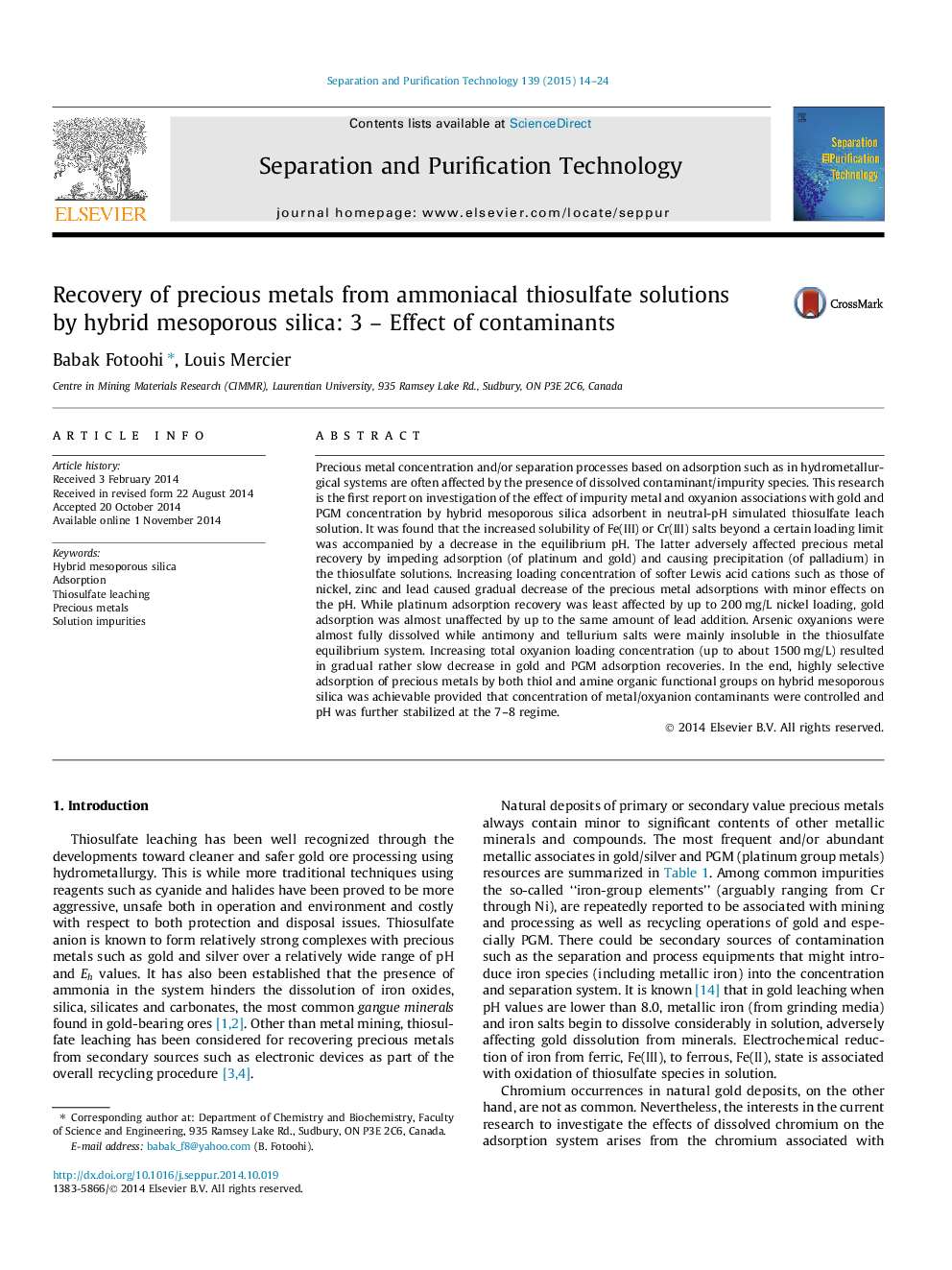| Article ID | Journal | Published Year | Pages | File Type |
|---|---|---|---|---|
| 640831 | Separation and Purification Technology | 2015 | 11 Pages |
Abstract
Precious metal concentration and/or separation processes based on adsorption such as in hydrometallurgical systems are often affected by the presence of dissolved contaminant/impurity species. This research is the first report on investigation of the effect of impurity metal and oxyanion associations with gold and PGM concentration by hybrid mesoporous silica adsorbent in neutral-pH simulated thiosulfate leach solution. It was found that the increased solubility of Fe(III) or Cr(III) salts beyond a certain loading limit was accompanied by a decrease in the equilibrium pH. The latter adversely affected precious metal recovery by impeding adsorption (of platinum and gold) and causing precipitation (of palladium) in the thiosulfate solutions. Increasing loading concentration of softer Lewis acid cations such as those of nickel, zinc and lead caused gradual decrease of the precious metal adsorptions with minor effects on the pH. While platinum adsorption recovery was least affected by up to 200Â mg/L nickel loading, gold adsorption was almost unaffected by up to the same amount of lead addition. Arsenic oxyanions were almost fully dissolved while antimony and tellurium salts were mainly insoluble in the thiosulfate equilibrium system. Increasing total oxyanion loading concentration (up to about 1500Â mg/L) resulted in gradual rather slow decrease in gold and PGM adsorption recoveries. In the end, highly selective adsorption of precious metals by both thiol and amine organic functional groups on hybrid mesoporous silica was achievable provided that concentration of metal/oxyanion contaminants were controlled and pH was further stabilized at the 7-8 regime.
Related Topics
Physical Sciences and Engineering
Chemical Engineering
Filtration and Separation
Authors
Babak Fotoohi, Louis Mercier,
